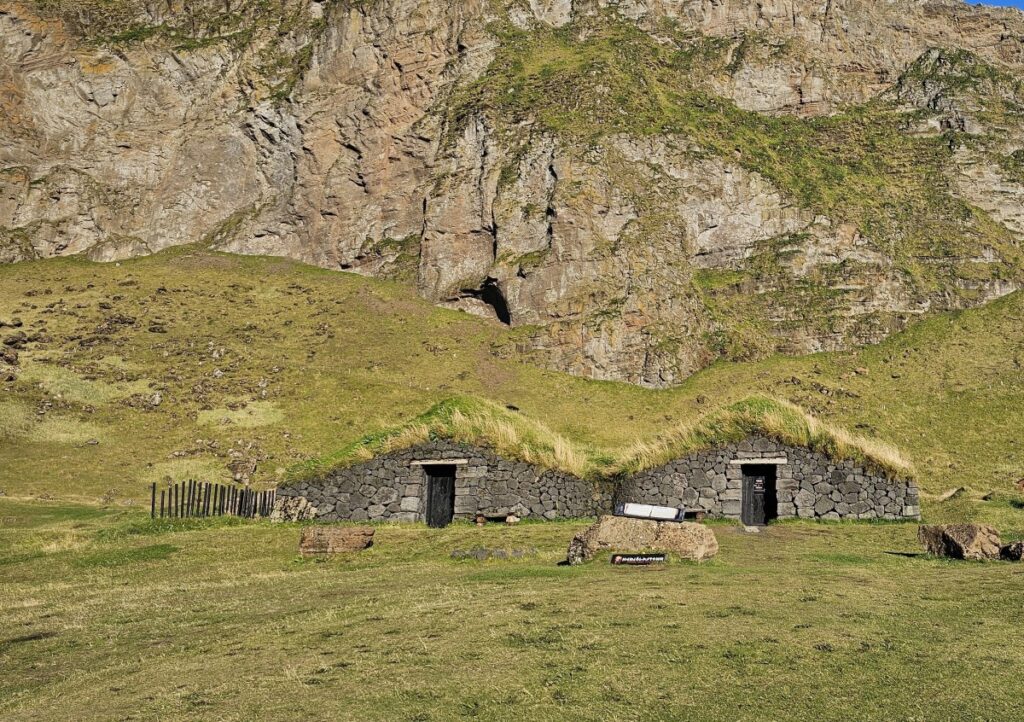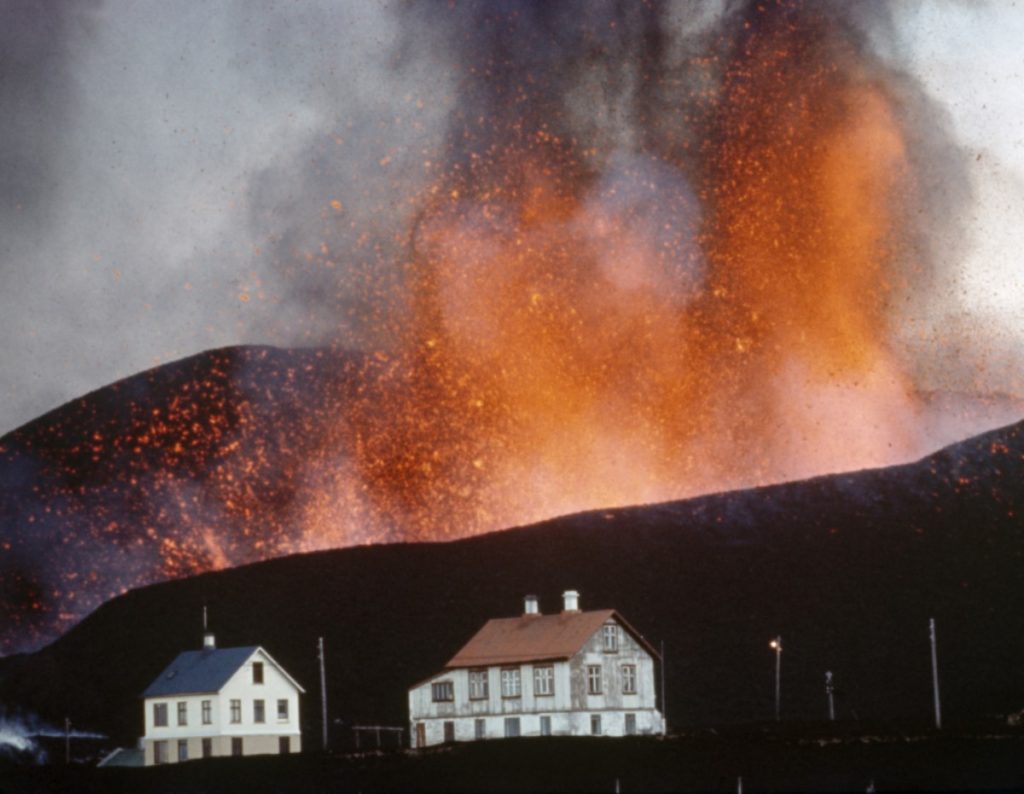A Guide to the History of the Westman Islands
The Westman Islands – or Vestmannaeyjar to locals – form a volcanic archipelago located off Iceland’s scenic south coast. They’re one of the most interesting parts of the country, with a long and rich history. If you’re planning to visit, then understanding a little of their backstory will give you context to appreciate what you are seeing and doing. We’ve prepared a brief guide to the history of the Westman Islands to get you started.
The geological history of the Westman Islands
The Westman Islands are one of the youngest areas of Iceland as they form part of an active submarine volcanic system. Most of the islands that form this archipelago are only between 10000 and 20000 years old. The youngest was created in living memory: Surtsey was formed between 1963 and 1966 as the result of a volcanic eruption that built new land from the ocean floor upwards.
Even more recently, volcanic activity has increased the area of Heimaey. In 1973 the largest island in the group (and the only one on which people live permanently) grew by 2.3 km², a significant area for an island this size. New land was created by lava flows in the eastern part of the island after the six month eruption that also increased the height of the Eldfell volcanic cone.

Settlement of the islands – and a name
Like Iceland as a whole, the Westman Islands’ settled history dates back to the 9th century. Common wisdom holds that a Norseman named Ingólfur Arnarson spent the winter of 873AD at a cape called Ingólfshöfði, further east than the Westman Islands. As the weather improved, he continued along the south coast and founded the place we know as Reykjavik a year later.
Not long afterwards, he found himself in the Westman Islands to avenge the death of Hjörleifur Hróðmarsson; sources variously call him Ingólfur’s brother-in-law, foster brother or blood brother – whichever is correct they had a close bond. Hjörleifur was living at Hjörleifshöfði as the end of the 9th century neared.
Hjörleifur owned Irish slaves, who rebelled and killed him. They fled to the island, but Ingólfur followed them, took his revenge and murdered them. Their leader, named Dufþakur, threw himself off a cliff so that Ingólfur wouldn’t catch him; today, that place is called Dufþekja. And the islands as a whole? At the time, the Irish were referred to as the “west men”. It’s thought that this event is why we know the volcanic archipelago as the Westman Islands.
The first settlers in the Westman Islands
We think that Herjólfur Bárðason was probably the first person to call the Westman Islands home. He lived here from around 900 or 920 AD and farmed the land. Records suggest that this was the only place on the island at that time where there was a reliable source of water. But later, a landslide wiped out his house and no evidence remains of it.
Early life
In those early days, the archipelago’s resources would have made the Westman Islands an enticing prospect. Islanders could be self-sufficient here and didn’t need to rely on goods from the mainland. The ocean surrounding these rocky volcanic islands was rich in marine life and there would have been an abundance of fish. Any surplus could be traded for other items, such as grain and tools.
The eggs of nesting seabirds were collected by islanders on ropes and the birds themselves were hunted; back then each were a vital source of nutrients though now of course these practices are both illegal. Down and feathers would have been used to make warm clothing and to provide insulation against the harsh winter weather. That’s not to say life would have been easy back then. Turf houses helped to keep out the rain and wind, but made damp and uncomfortable homes.

Dangerous episodes
There are also some documented events during the course of the Westman Islands’ history which show that from time to time, danger came calling. The most notorious of these was what’s now referred to as the Turkish abductions. It’s sometimes hard for us to imagine that although most people lived a simple life, there were still those who ventured a lot further afield. While some of those adventurous types had good motives, others were not so trustworthy.
- The Turkish abductions
In 1627, Iceland was the victim of several pirate incursions and one of those raids targeted the Westman Islands. The corsairs came from Algiers, now the capital of modern-day Algeria, but in those days the place had close ties to the Ottoman Empire which explains the Turkish connection.
Knowing that the local population could probably defend the harbour of Heimaey, these pirates chose to land instead on its south shore. They took the Westman Islanders by surprise and though some were able to escape and hide, many others were rounded up and carried off to North Africa where they were sold as slaves. Some never returned and it is an upsetting chapter in the archipelago’s history.
- The eruption of 1973
More than three centuries later, the Westman Islanders faced danger of a very different kind. While Surtsey’s creation harmed no one, the presence of a volcano right beside the archipelago’s main settlement was a more worrying threat. In 1973, an eruption kicked off which would change the landscape of Heimaey forever.
That January night, the weather had been stormy, so all the boats were in the harbour. Helgafell, the volcanic cone on Heimaey, had been dormant for 5900 years and as such had troubled no one. A series of small earthquakes should have acted as a warning but didn’t, as monitoring was not the more precise science it is today. The volcano woke up, and a mile-long fissure opened close to the town spewing ash and lava.
Those boats were quite literally life-savers. In just a few short hours, residents were evacuated to safety; though some of them lost their homes, no lives were lost. Brave volunteers and scientists remained to carry out a perilous but ultimately successful operation to pipe and pump water on the lava and save the harbour – the main source of income and thus vital of people were to be able to return.

Today’s Westman Islands
These two very different incidents, coupled with people’s ability to settle here in the first place, demonstrate the resilience of the Westman Islanders. These events would have been as terrifying as they were unexpected, yet those who lived here weathered the storm and returned to their everyday lives once the threat had passed.
In the 21st century, the islands are well connected to the mainland and residents live comfortably, albeit amid extraordinary surroundings. Today, as you sip your coffee, reflect on how island life on modern day Vestmannaeyjar is a world away from that of the past. It makes a fascinating back story, nevertheless, and one which our guides will be more than happy to flesh out for those interested in learning more.
As you explore the island by ATV on one of our tours, why not choose one with a focus on pirates or volcanic scenery? Understanding a little of the archipelago’s history will add an extra dimension to your enjoyment of the place while you’re having loads of fun riding around.